Haiti is a country of great beauty and diversity, both culturally and naturally. With an estimated 5,600 plant species on the island of Hispaniola, 36% are considered as endemic to the island. Flowers and plants in Haiti are as unique as the country itself, with a variety of both native and introduced species. From the lush rainforests to the sandy beaches, Haiti is home to a wide variety of colorful and stunningly beautiful flowers. In this article, we will explore the top flowers and nice plants in Haiti.

What are the top Flowers in Haiti?
Haiti’s wildlife is home to a unique and diverse range of flora, from the Hispaniolan moist forests to Greater Antilles mangroves. Found growing in these areas are giant tree ferns, orchids, bayahondes, cacti, acacias and thorny woods.
Additionally, the nation has 300 orchids and 600 fern species, as well as mahogany, rosewood and cedar trees at higher altitudes. In terms of marine life, there are 35 species of hard corals and 55 species of sponges that make their home in the reefs.
Haiti’s Floral Wonders: A Blossoming Paradise in the Caribbean
Haiti, a vibrant Caribbean nation, boasts a stunning array of colourful flowers. This tropical paradise is home to both native and exotic plants, making it an ideal destination for nature lovers and gardening enthusiasts.
A visit to Haiti’s botanical gardens, such as the Parc de Martissant and the Jardin Botanique des Cayes, offers a unique opportunity to explore the country’s rich floral heritage. These gardens showcase a variety of native and exotic plants, promoting biodiversity and conservation efforts.
The country’s diverse and colourful flowers contribute to the country’s undeniable charm. From hibiscus to bougainvillea, the country’s floral beauty captivates the senses and enriches its cultural identity.
Paperflower
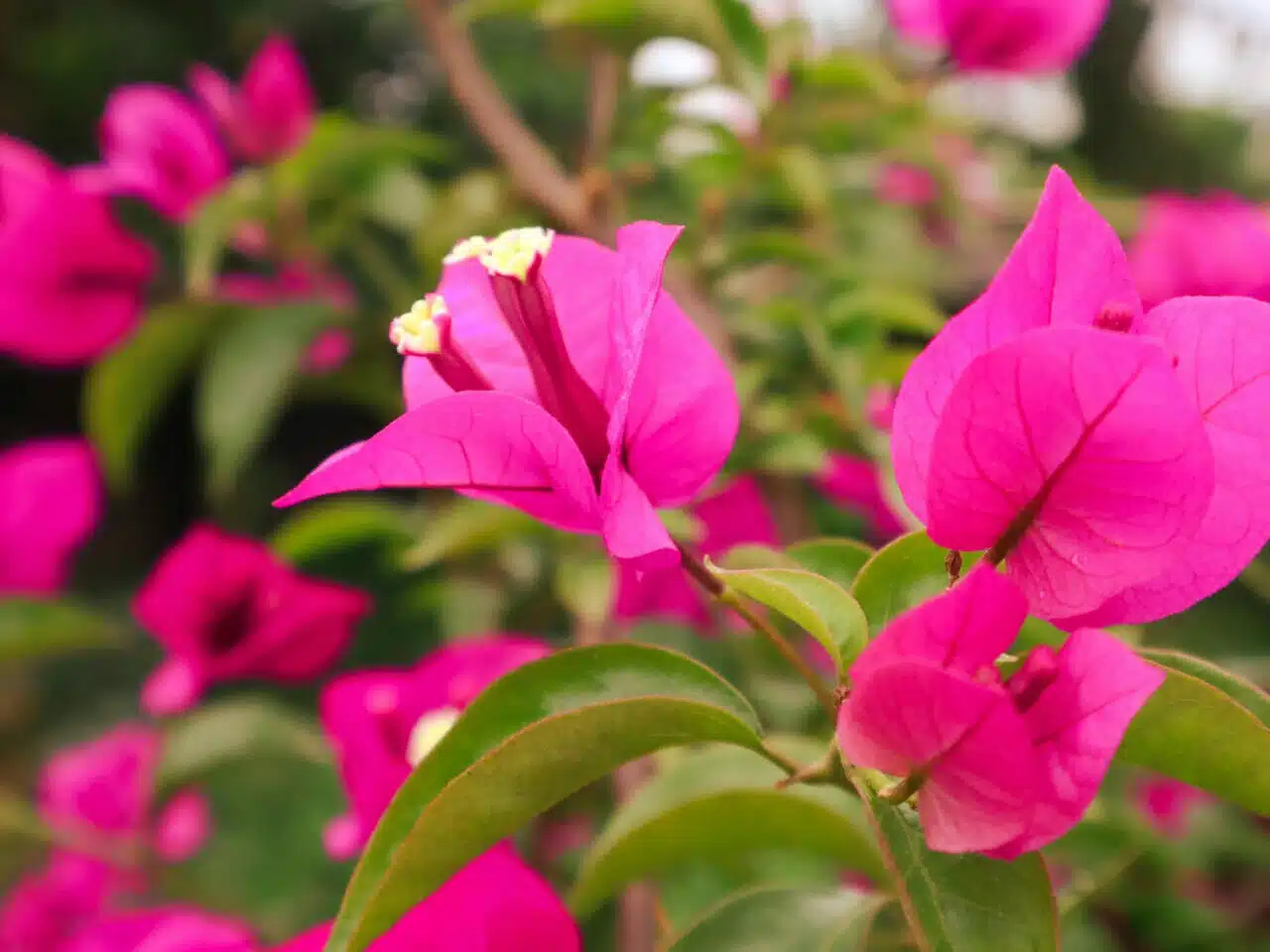
Bougainvillea Glabra, more commonly known as Paperflower, is a popular outdoor ornamental plant which blooms best in warm climates. It is native to Brazil and is a climbing vine with papery bracts that can be up to 20 to 30 meters long. The bracts of Paperflower can range from purple or magenta to lighter tints in some varieties. It is in flower throughout the year and can be used to make paper flower decorations.
When caring for Paperflower, it is best to give it a deep watering about every 1-2 weeks. Ensure it is located in a sunny spot for maximum growth and blooming potential. Is is one of the best Flowers in Haiti.
Yellow Alder
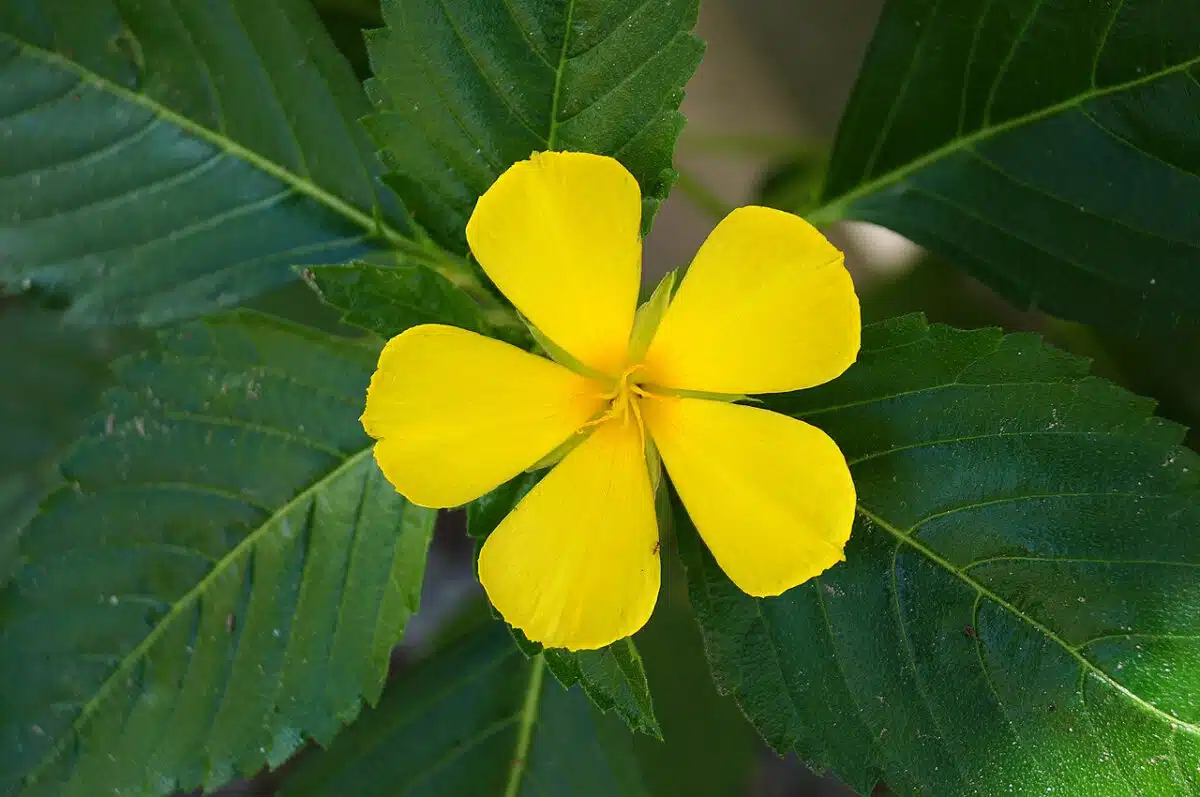
The very beautiful flower Yellow Alder, scientifically named Turnera pumilea, is a genus of woody vines. It is shrubs related to the purple and yellow passionfruit. The flower was named after English botanist William Turner. Several of its species are propagated for ornamental use in gardens and landscapes. Yellow alder thrives best in full sun, meaning it requires at least six hours of direct sunlight each day to sustain growth and bloom.
Yellow alder is a small shrub native to the Caribbean basin. It grows erect to 91 cm tall with dark green foliage and bright yellow flowers. The flowers are yellow, 1” – 2” flowers, and bloom year-round. The leaves are simple, 2 to 4 inches in length, cluster at the stem tops and have serrated leaf edges. It grows in cultivated and uncultivated areas, preferring sandy soils and full sun.
Propagation is done by cuttings and stem division, and it may self-seed. It is a great plant for attracting butterflies, birds and bees. Blooms will last only a day but are produced all season long. It is also used for mass plantings, ground cover, borders, foundation and in a potted plant if well drained.
Bridal Bouquet
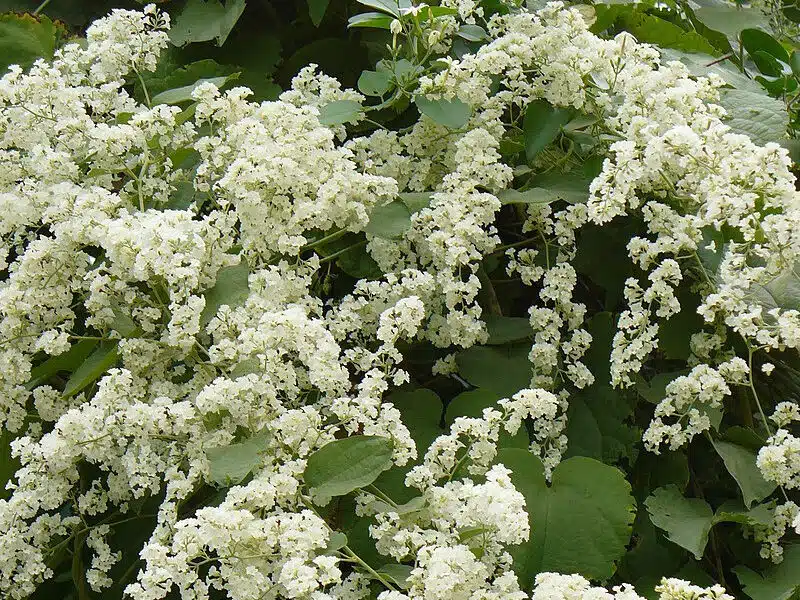
Poranopsis paniculata or Birdal Bouquet is a species of perennial herb in the family Convolvulaceae. It is native to the Himalayas and cultivated widely in South India. The stems are herbaceous at the tips and woody at the base, and grayish velvety. Leaves are ovate-heart-shaped, 4-9 cm long, blunt to long-pointed and velvety on both surfaces.
Sepals are linear, 1-1.5 mm long, and densely velvety. Flowers are white, funnel-shaped, 5-6 mm long. Fruits are ovoid-round, 5-6 mm long, and the outer 3 sepals enlarged and wing-like. Seeds are ovoid, brown. Bridal Bouquet grows in the Himalayas, ranging from Pakistan to India, at altitudes of 180-1990 m, and flowers from October to March. Many tropical places cultivate it as an ornamental plant for its dense masses of white flowers.
High Risk Traits include wet soils in winter, so good soil drainage is essential. It tolerates some light shade, particularly in hot summer climates. Remove spent flower heads to prevent self-seeding.
Bear’s Breech
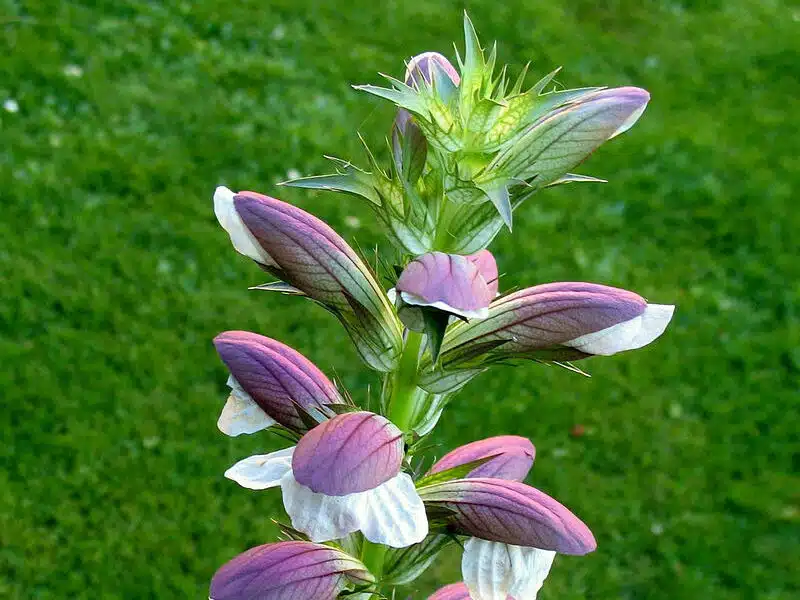
The flower Bear’s Breeches is a clumping perennial plant in the Acanthaceae (acanthus) family. Acanthus mollis, commonly known as “Bear’s breech” or “Oyster plant“. It is native to Europe and the Mediterranean. Gardeners favor this species of plant for its attractive, ornamental leaves, often depicted in ancient sculptures, columns, and furniture. To maintain the plant’s health, water it at least once a week.
Bear’s breeches are large perennial plants with glossy green leaves and tall spikes of flowers. A wide rosette of arching, shiny, dark green leaves forms the foliage, which features deep lobes. People prize this plant for its bold clumps of shiny green leaves and striking, 3-foot-tall spires of white flowers, clasped by showy purple bracts, that top it.
Bear’s Breeches will start blooming in late spring to midsummer and continue blooming for 3 to 4 weeks. It prefers full sun to partial shade and a moist but well-drained soil. Bear’s breeches can be aggressive growers, spreading and squeezing out neighboring plants. It is also considered an invasive species in parts of the US.
Erect Hedgeparsley
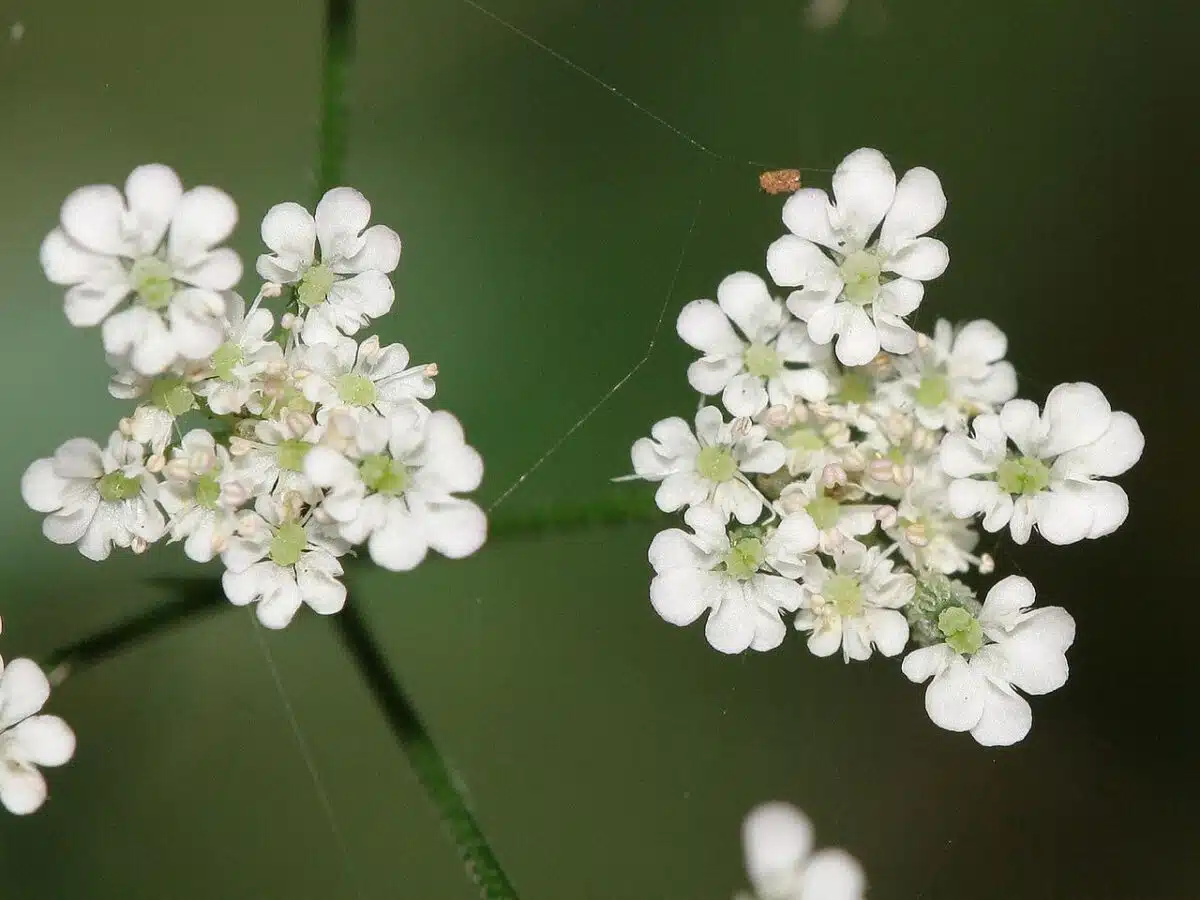
The Erect Hedgeparsley (Torilis japonica), also known as Japanese hedge parsley, is an invasive plant native to Eurasia. It was introduced to North America in 1917 and has since spread vigorously and rapidly in various non-native habitats. The flower is an annual growing to 1 m (3ft 3in).
It is in flower from July to August, and the seeds ripen from August to September. It is native to Europe and Asia, and highly invasive in North America. Its fruits are small and very persistent burrs that stick to clothing and fur. It has clusters of small white flowers and the leaflets of the compound leaves are trifoliate.
It prefers well-drained soil and can grow in semi-shade or no shade. People can eat the leaves and root of the plant, either cooked or raw, and use it medicinally to treat dysentery, fever, and indigestion. It also serves as an anthelmintic, antifungal, and antiviral agent.
Depending on the geographic location and climate, it can be an annual or perennial. The plant requires full sun exposure.
Plumeria (White)
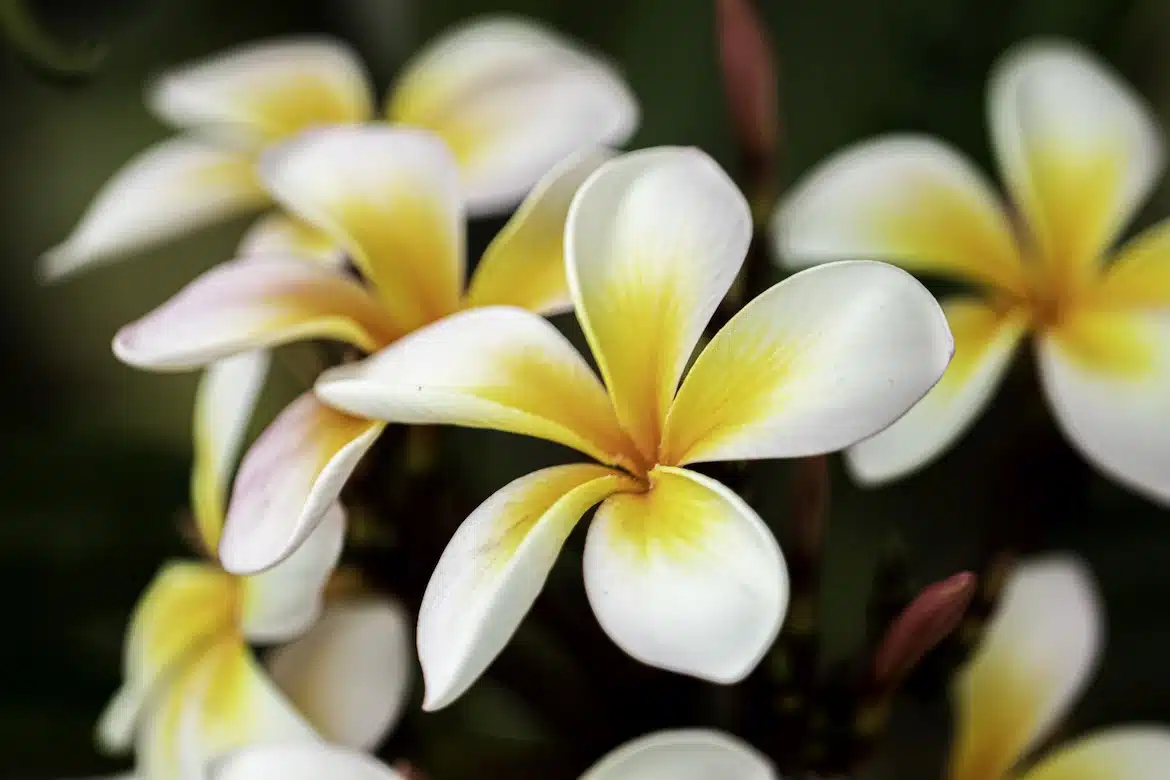
The White Plumeria is a small evergreen tree native to Southern Mexico and the Caribbean. Growing to a height of 3 to 4 meters, the tree is characterized by a crown of thickly-branched stems. Its leaves are long and narrow, light green on top and slightly paler underneath.
The flower is usually white in color, but can also be shades of white from bright white to cream. The Plumeria flower does not have any nectar in them, and is famous for its waxy, long-lasting, sweetly fragrant blooms.
They are deciduous, shedding leaves during winter, but can reach a height and spread of up to 20 feet (6 meters). The tree also has glossy green leaves that are 8 to 12 inches long and 2 to 4 inches wide. Frangipani, the known genus of Plumeria, derives its name from Marquis Frangipani, a noble Italian who invented a perfumed flower-scented glove.
The White Plumeria blooms year-round in tropical climates, while in temperate regions it only blooms in the summer. The flowers are white with a yellow center. The White Plumeria is also known as the White Wallflower and within the top flowers in Haiti.
Stachytarpheta Cayennensis
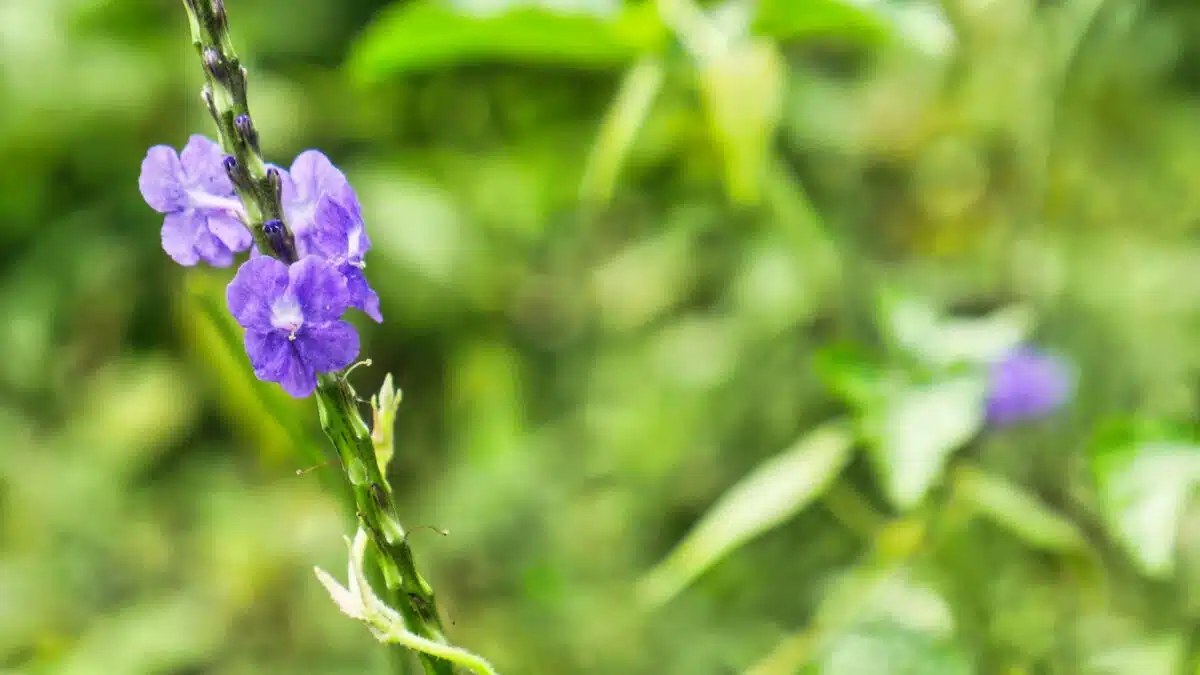
The flower Stachytarpheta Cayennensis (syn. S. urticifolia) – Blue porterweed is an evergreen shrub with distinctive blue flowers that is cultivated as an ornamental in many tropical countries around the world.
It blooms nearly year-round in many places, its blue flowers attract bees and butterflies and is host plant for the tropical buckeye. Its stems and leaves are almost or totally hairless (i.e. glabrous) and its leaves have a wrinkled appearance with sharply and deeply serrated margins.
It produces many small flowers along a long, curved, thin spike that extends past the plant foliage and is 10-45 cm long and 0.5 cm wide. The flowers display deep purple-blue to lavender hues with pale centers, and people know of white-flowered plants as well.
The shrub can reach heights of up to one meter, and it has egg-shaped, serrated leaves with very short stalks. The flower petals are purple-blue in color.
Scarlet Milkweed
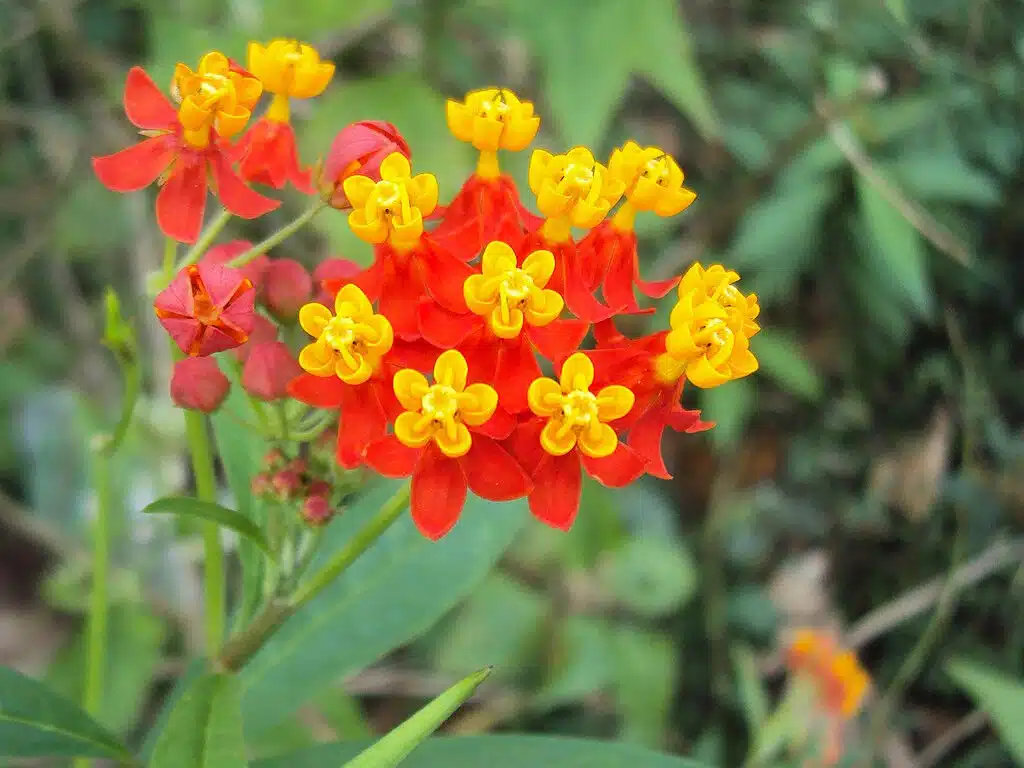
Scarlet milkweed, also known as Asclepias curassavica, is a short-lived perennial flower native to the Caribbean. Featuring showy red blossoms, the plant is often used in butterfly gardens to attract monarch butterflies.
Its showy orange and red flowers are attractive to butterflies and hummingbirds, and it is a favorite food of monarch butterfly caterpillars. People use the plant’s latex, roots, leaves, and flowers medicinally. In the treatment of fever, they use a decoction of the root, while in Costa Rica, they apply the sap directly to warts and corns to eliminate them. A syrup made from the juice of the Mexican Milkweed is a powerful vermifuge.
Additionally, people know Scarlet milkweed by other common names like Herbe Madame, Bouvin and Ipeca d’Haiti. The plant commonly self-seeds, making it easy to spread and grow in favorable climates.
Ananas
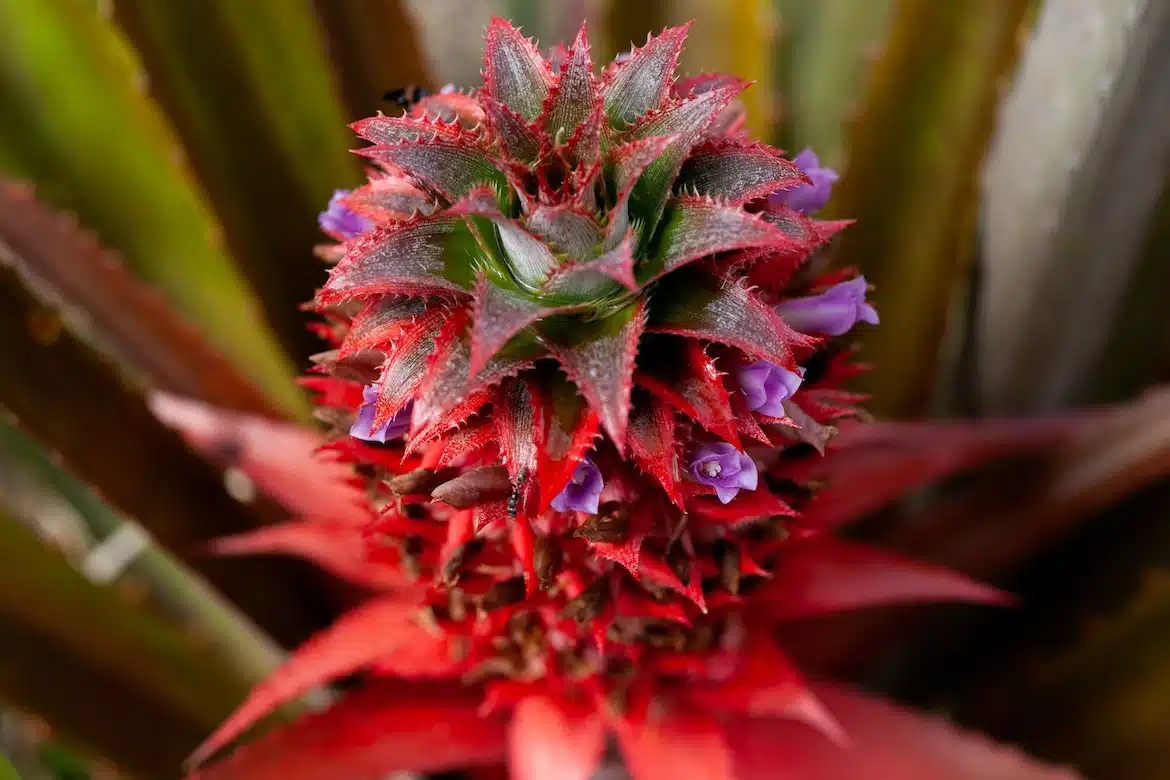
Ananas is a tropical flowering plant in the bromeliad family. It is native to South America and known for its edible fruit, the pineapple. Ananas is a shallow rooted plant that prefers full sun and temperatures between 65 to 95°F. It takes up to three years for the plant to produce fruit. The wide rosette of arching, shiny, dark green leaves forms the foliage, featuring deep lobes.
The fruit is actually the result of dozens of individual fruit-producing flowers that have fused together. The pineapple fruit grows out of the top of the central stem. The pineapple is a symbol of hospitality, friendship and warmth because of its unique shape, sweet taste, and striking appearance. People also use it as a source of nutrition, medicine, and even as a natural sweetener.
Hibiscus rosa-sinensis
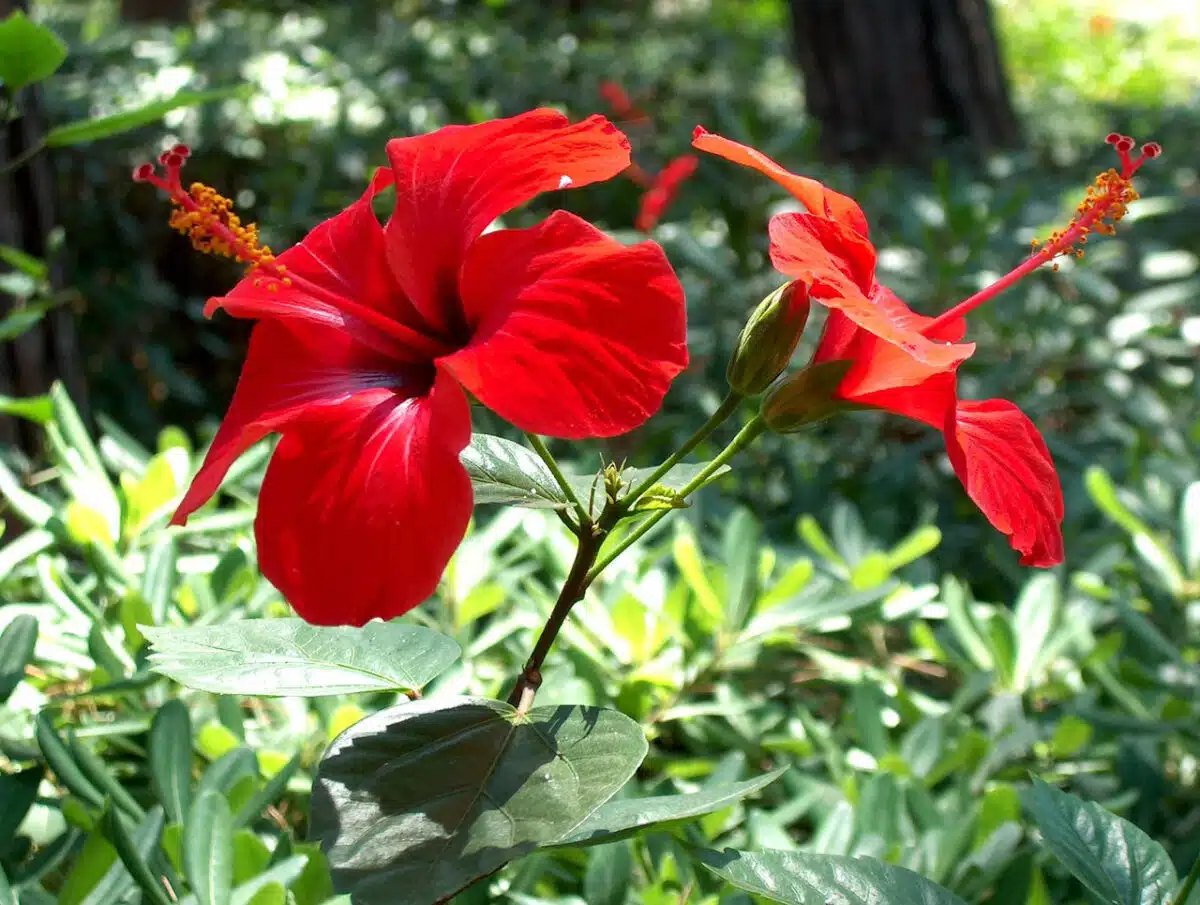
Chinese hibiscus (Hibiscus rosa-sinensis) is a species of tropical hibiscus, native to Asia. It is a small flowering tree that grows 4 to 10 feet high and 5 to 8 feet wide. It has large, showy flowers that can be red, white, yellow or orange. The flowers are fragrant and attract butterflies and hummingbirds.
The foliage is a wide rosette of arching, shiny, dark green leaves that are deeply lobed. Chinese hibiscus is an easy to grow, low maintenance plant that is drought and heat tolerant. It prefers full sun and well-drained soil. Although a tropical plant, people can grow it in colder climates as an annual.
Sesuvium Portulacastrum
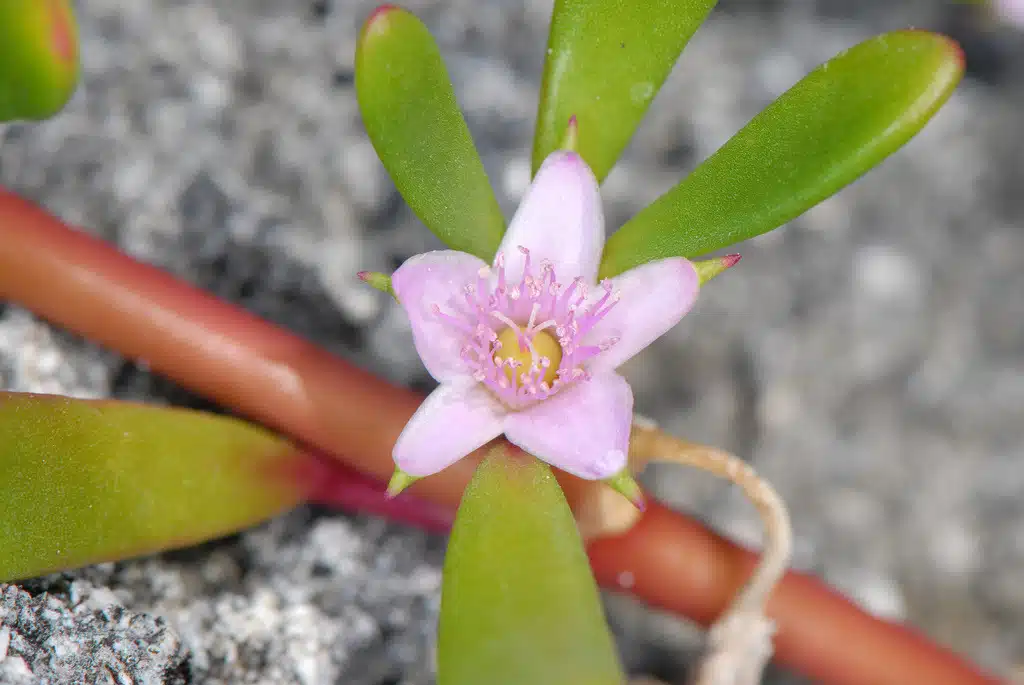
Sesuvium portulacastrum, commonly known as Shoreline Sea Purslane or Pourpier-bourd-de-mer, is a drought and salt tolerant groundcover with fleshy leaves and semi-showy purplish flowers. Sesuvium portulacastrum is a perennial, low-growing succulent plant native to coastal regions in the Americas and the Old World. It is a pioneer species, used for sand-dune fixation, desalination, and phytoremediation along coastal regions.
This sprawling plant is a useful tool in stabilizing sand dunes, making it an important part of beach ecology. This is a hardy plant that can survive in areas with little water and high salinity. Forming a short, dense ground cover, it helps prevent the erosion of shorelines and sand dunes. It produces tiny pink flowers and can tolerate occasional flooding.
The flowers, although not large in size, have an attractive purplish hue that adds to their usefulness as an ornamental plant. Furthermore, this plant is a valuable source of food for local wildlife.
Cordia Sebestena
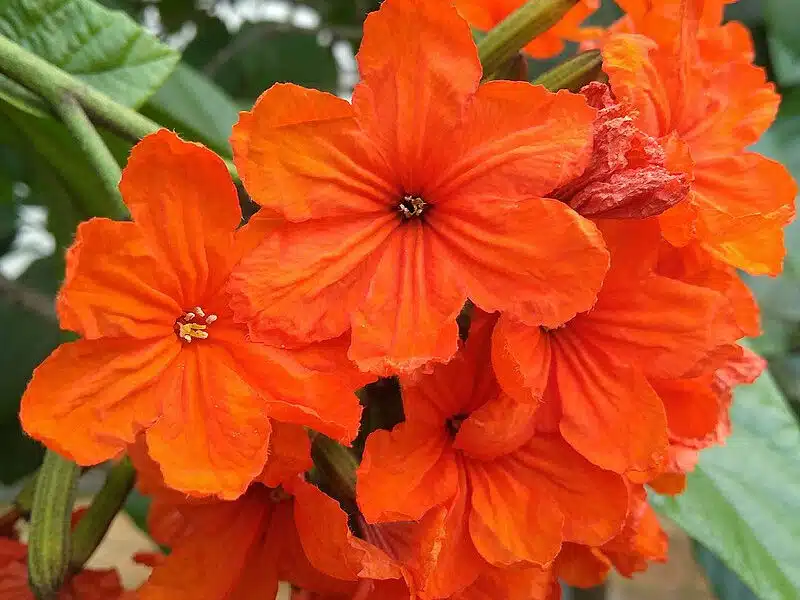
The Cordia Sebestena, also referred to as bois d’ine, kòkèliko and fleurs coquelicot, is a small tree with bright green leaves and orange flowers. It ranges from southern Florida in the United States and the Bahamas, southwards throughout Central America and the Greater Antilles.
Common names have included siricote or kopté (Mayan) in 19th Century northern Yucatan, scarlet cordia in Jamaica, and Geiger tree (after Key West wrecker John Geiger) in Florida. It grows to a maximum height of 8–9 m (25–30 ft) at maturity, with a nearly equal spread.
The flowers are red-orange in color and tubular, flaring (salverform) with 5–7 lobes, bearing 5–7 stamens of similar height. Its fruits are fragrant and edible, but not flavorful. People widely plant Cordia Sebestena as a decorative plant in tropical gardens for its attractive flowers. The wood is rather light in density, but branches are not prone to breakage.
It tolerates drought, but not frost, and enjoys full sun or part-day sun. Its uses include: street tree, shade tree, and even as a container subject in its youth. Often used as a landscape ornamental due to its striking foliage and flower color, the Cordia Sebestena Geiger tree is an attractive and eye-catching addition to any garden or outdoor space.
Garden Croton
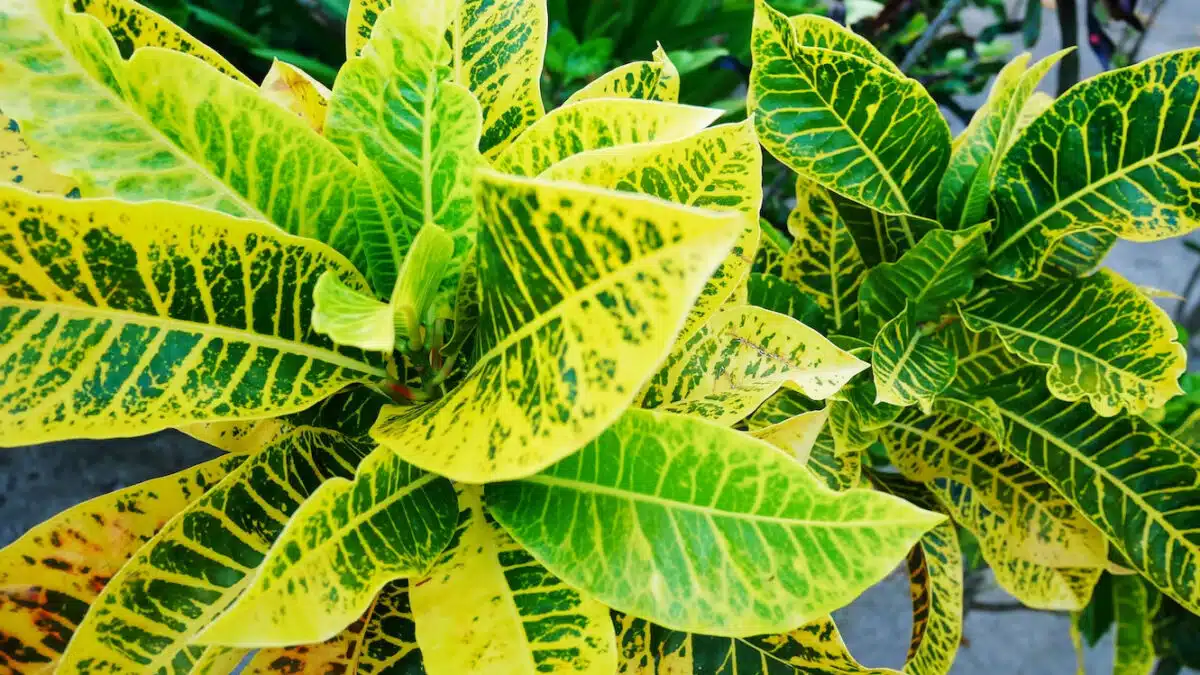
The Garden Croton, also known by its scientific name of Codiaeum Variegatum, is an aesthetically pleasing tropical plant that thrives both indoors and in warm climates. This locally grown evergreen tree, which can reach heights of 15-30 feet and bears pale pink flowers, is a popular ornamental plant in Haiti, frequently appearing in gardens and parks.
This species is renowned for its magnificent foliage which can present in various vibrant colors. Garden Croton has glossy, dark green leaves and yellow, red, or orange vein-like patterns, making it an attractive houseplant. The tropical islands of Malaysia, Indonesia, and the Philippines are home to this native plant, and many parts of the world grow it. It is an excellent air purifier and helps reduce formaldehyde, benzene, and carbon monoxide in the air.
People know Garden Croton for its medicinal properties and use it to heal skin problems, relieve joint pain, and treat bronchitis among other conditions. In traditional Haitian medicine, people also use it to treat stomach ailments and fever.
Conclusion – Flowers in Haiti
Haiti is home to a wide variety of beautiful flowers and plants as diverse as the country itself. From lush rainforests to sandy beaches, Haiti is home to a variety of colorful and stunningly beautiful flowers.
I hope you enjoyed the beauty of our top flowers from Haiti. As you have seen, there are a variety of beautiful flowers in the enchanting country of Haiti. This was just a selection of the most beautiful flowers, there are many other beautiful flowers in Haiti.
Article: Flowers in Haiti! Here you can find more blogs about Haiti or the best places to visit in Haiti
- A Milestone in North Korea Tourism: Russian Tourists Arrive - January 14, 2024
- Rediscovering China’s Skies: China International Flights Recovery - January 7, 2024
- Exploring the Philippines: A Record-Breaking Tourism in 2023 - January 7, 2024

